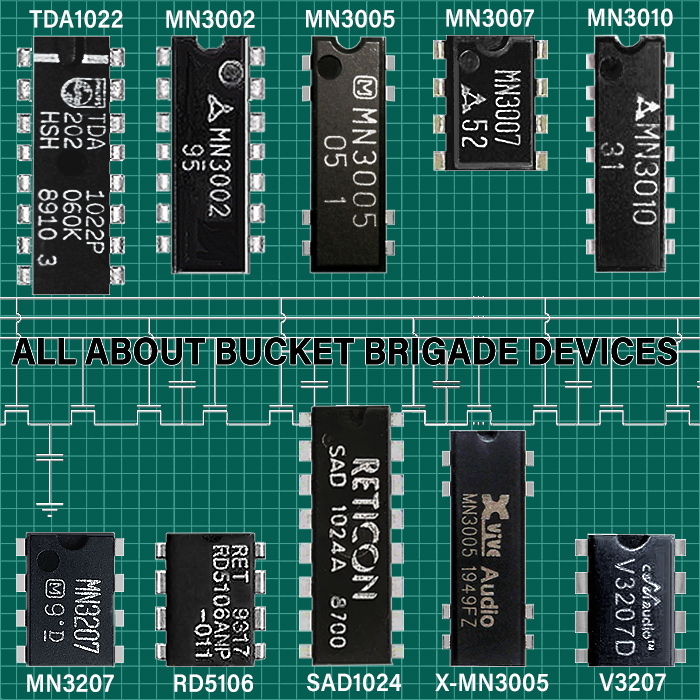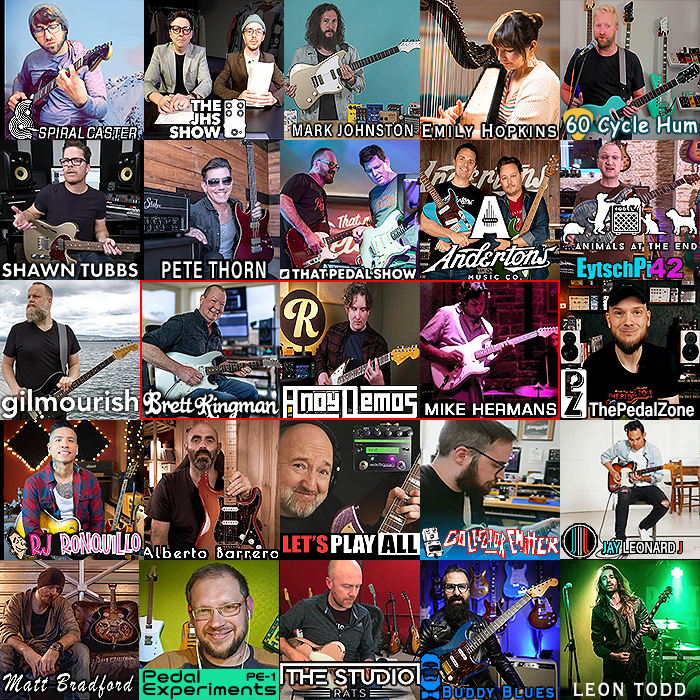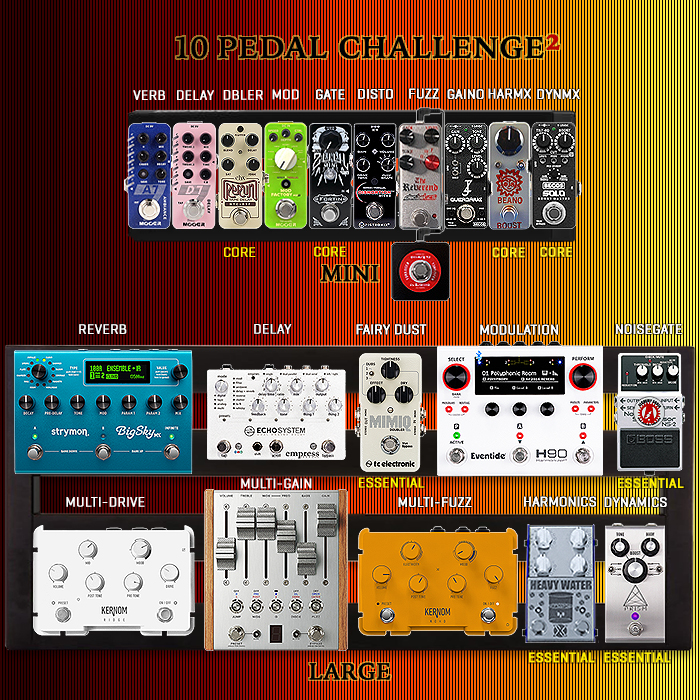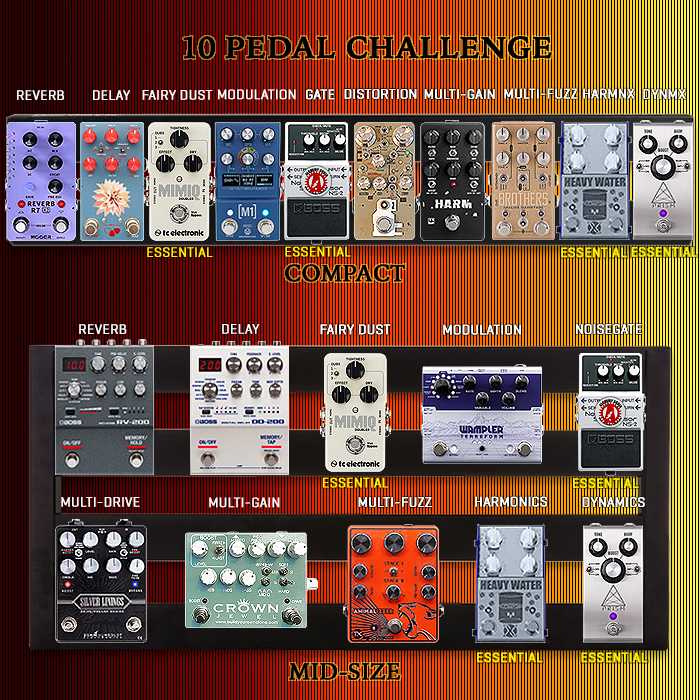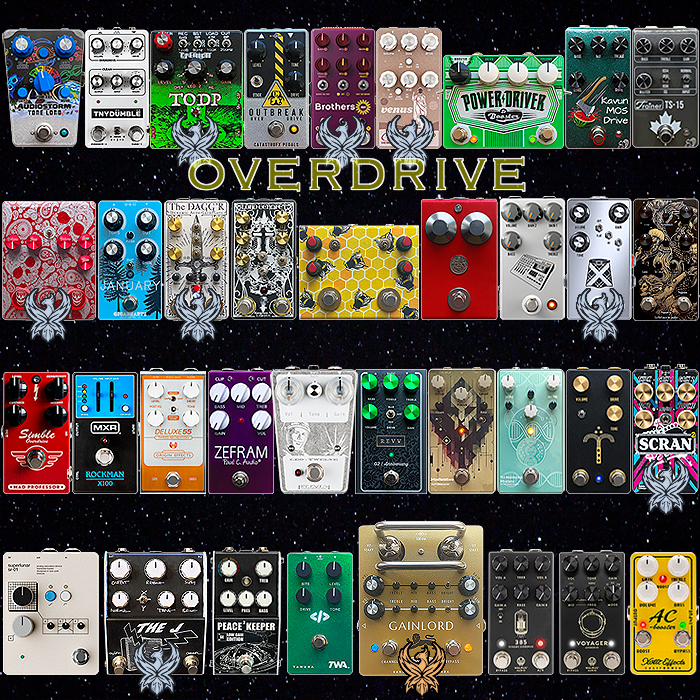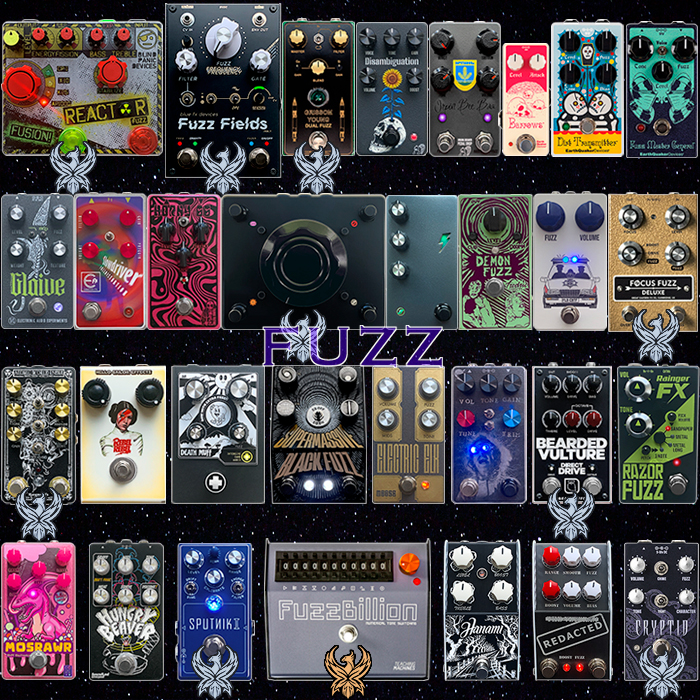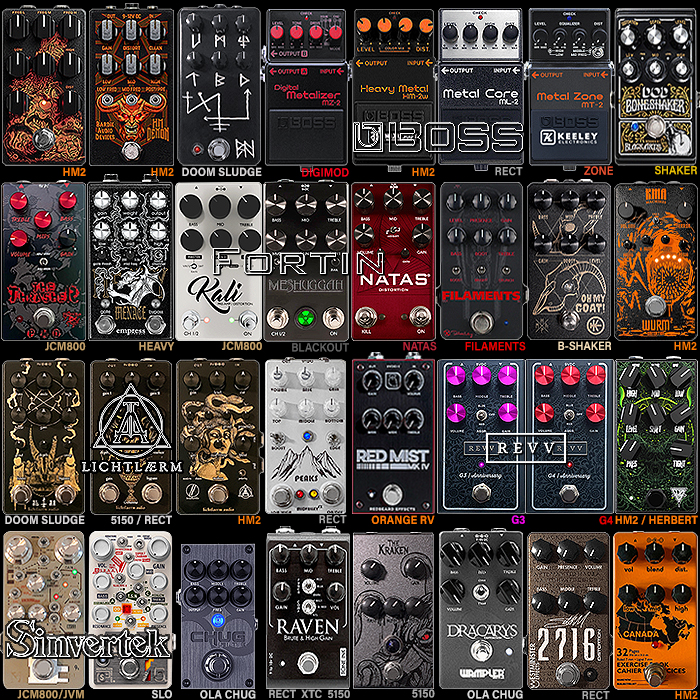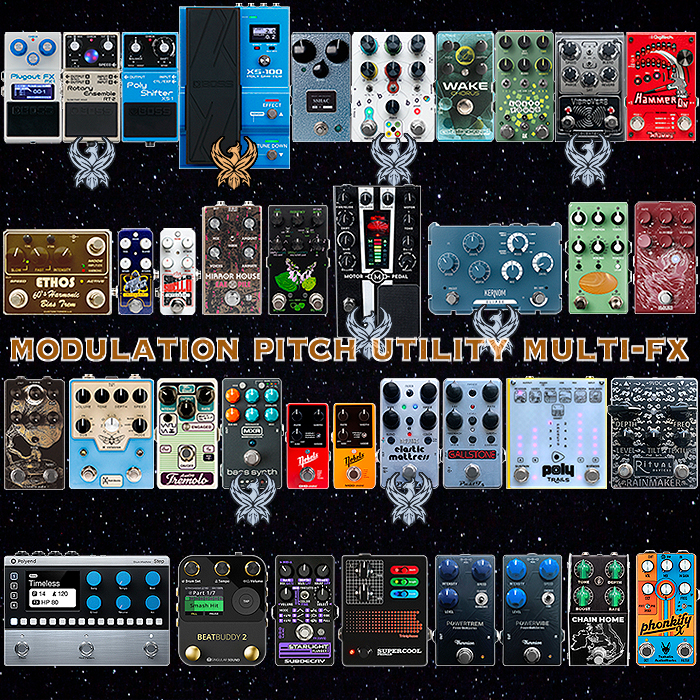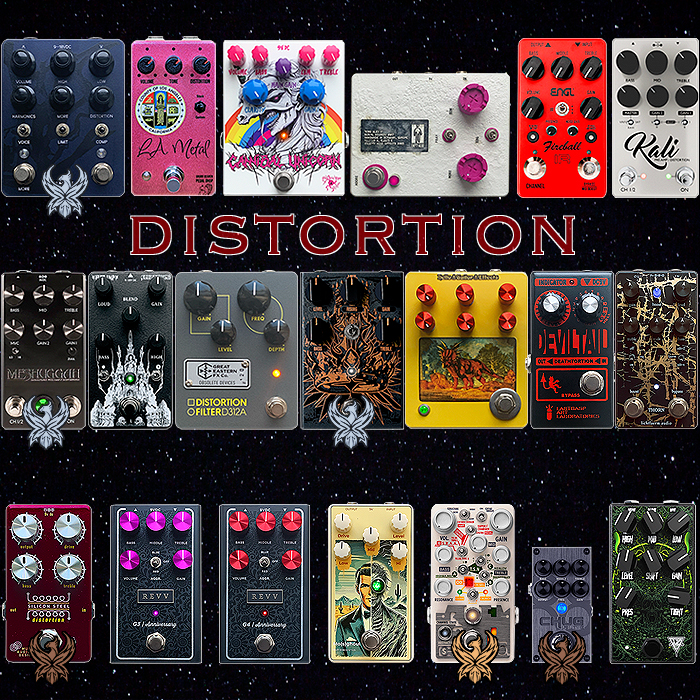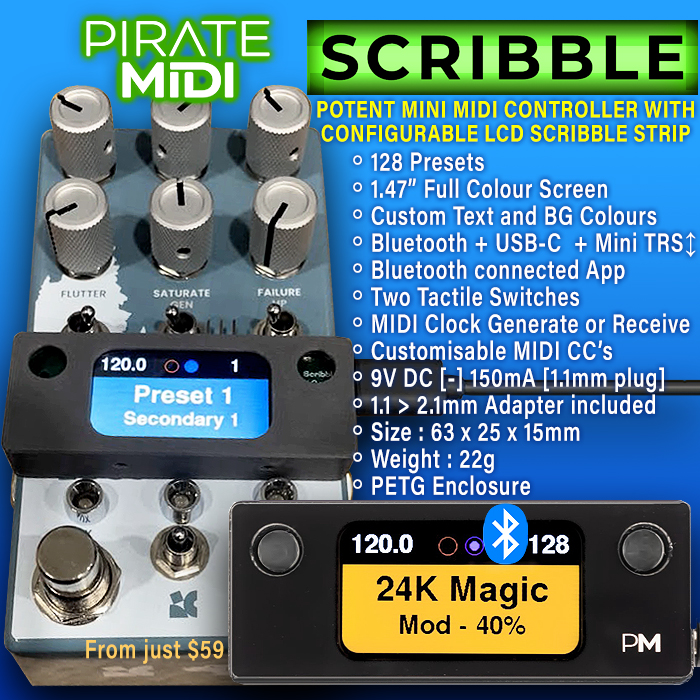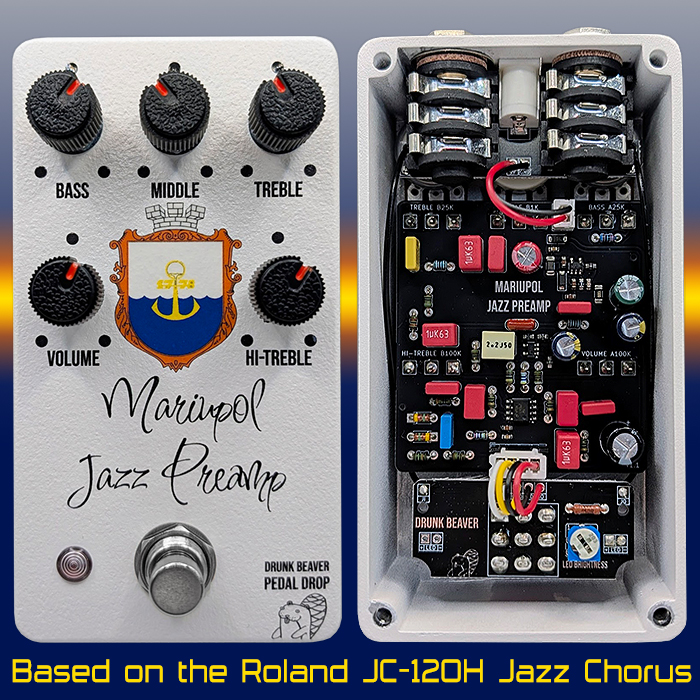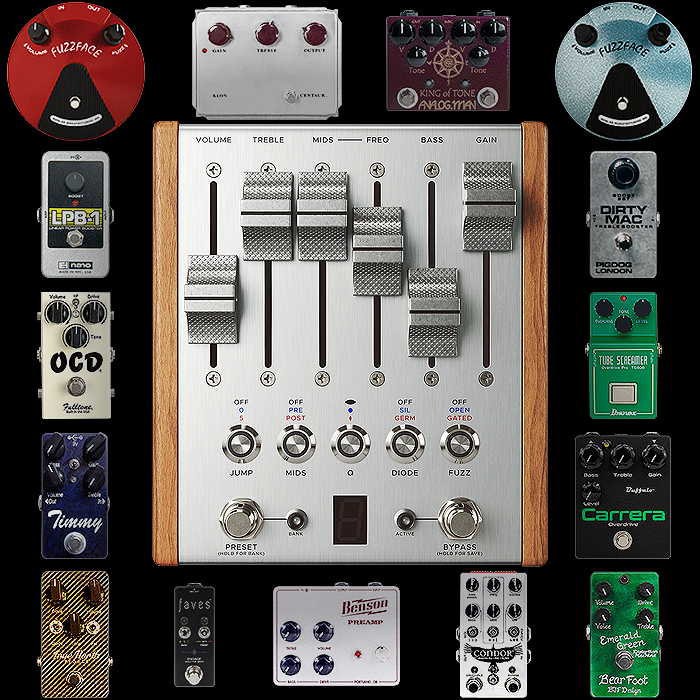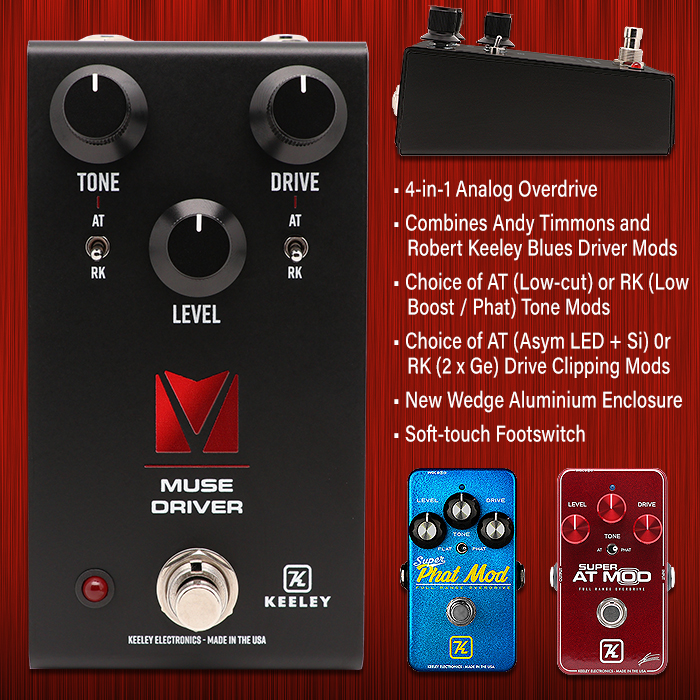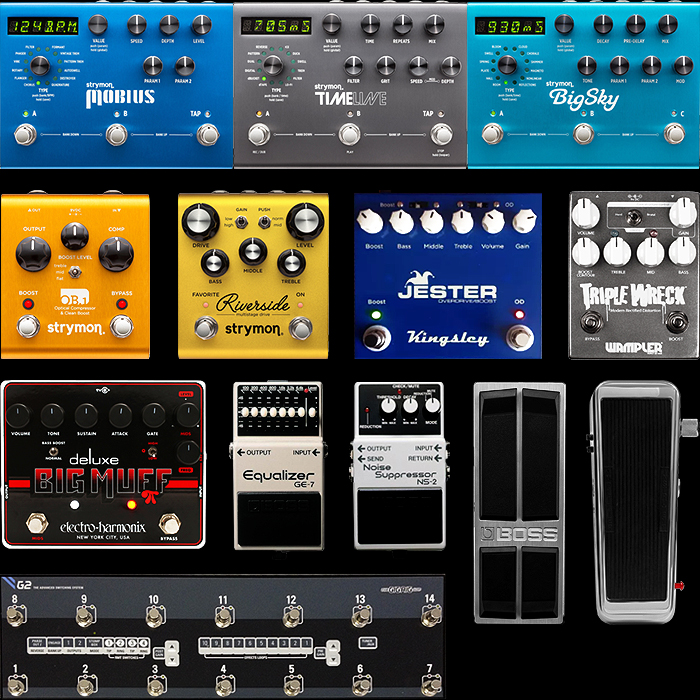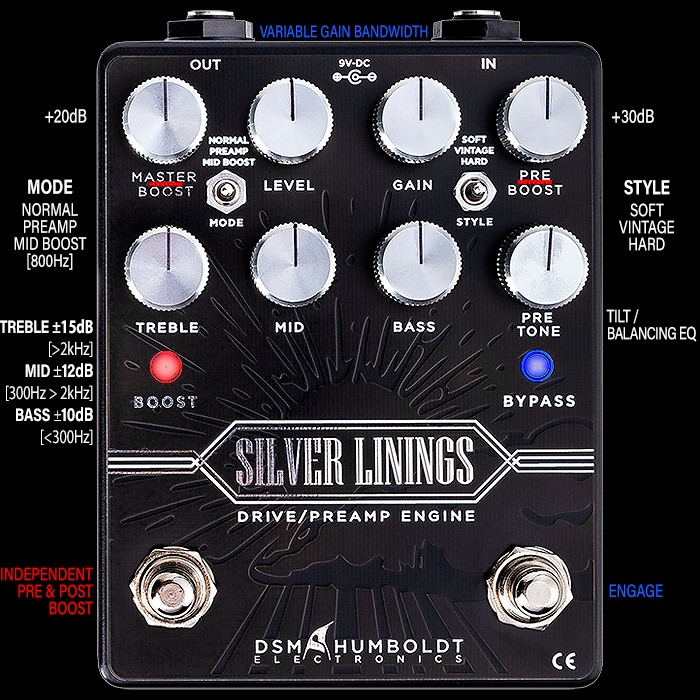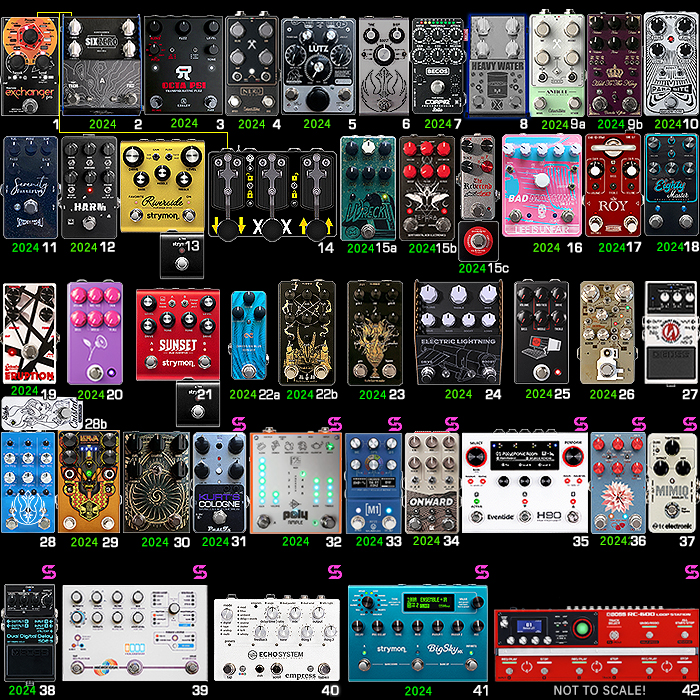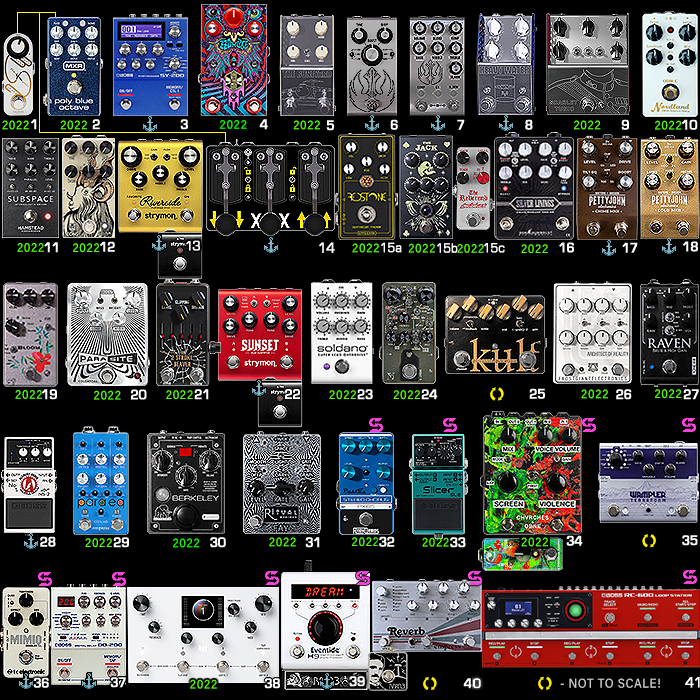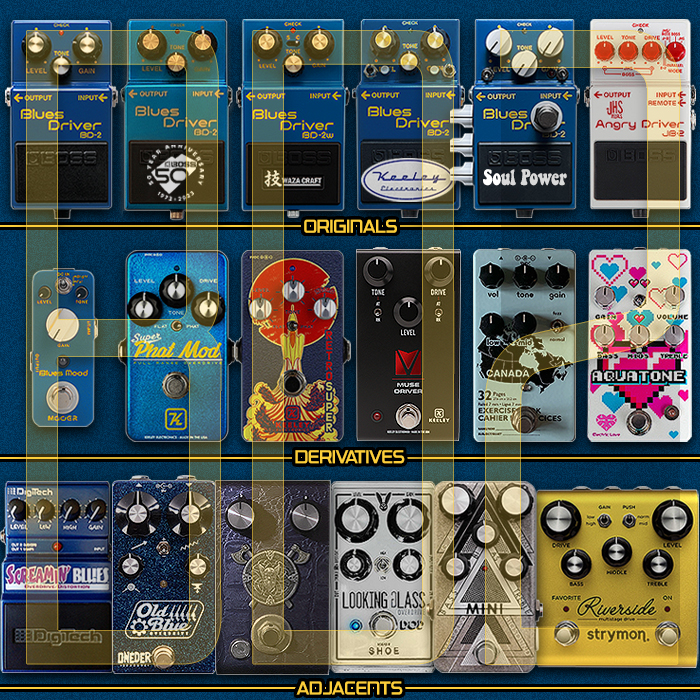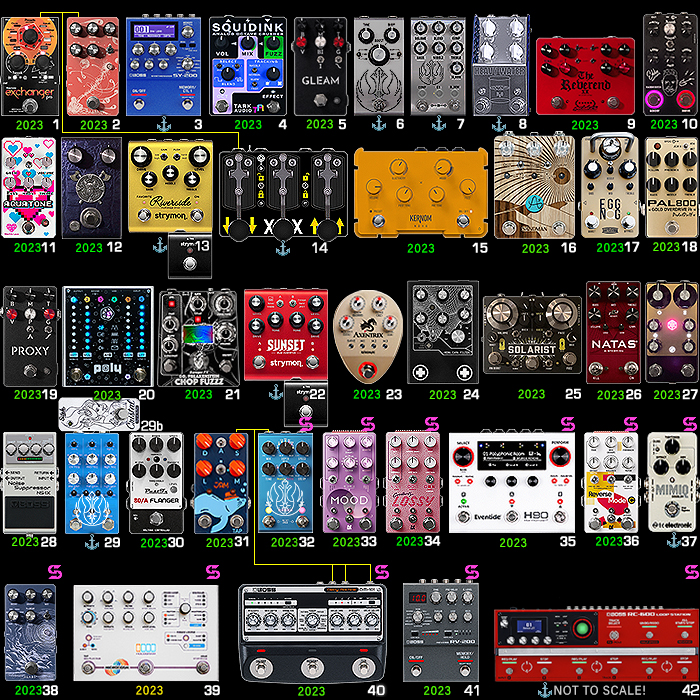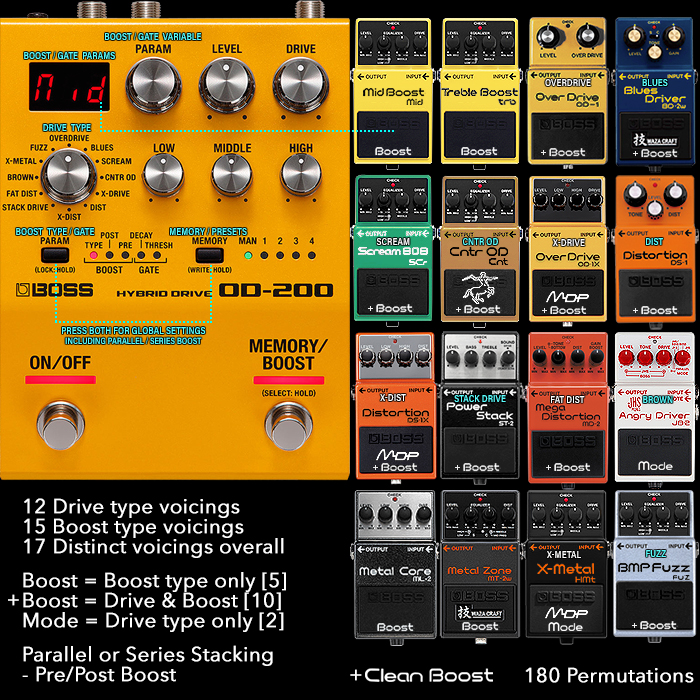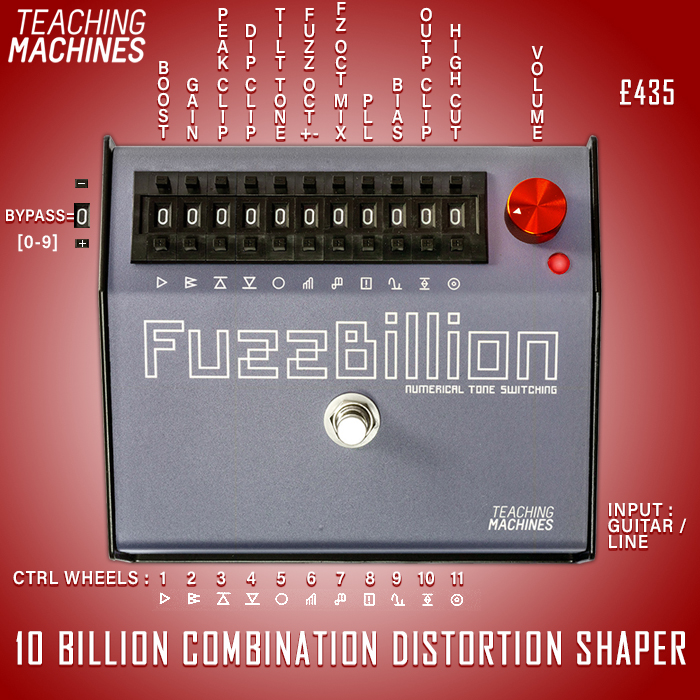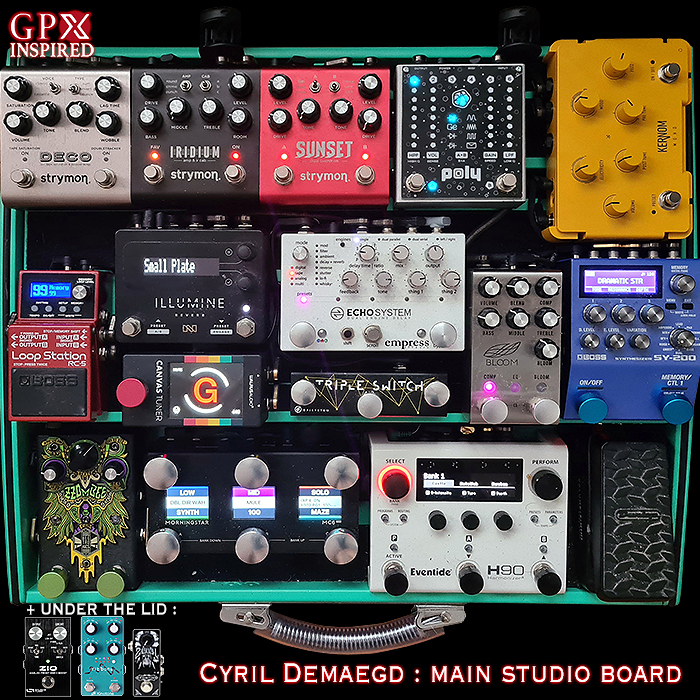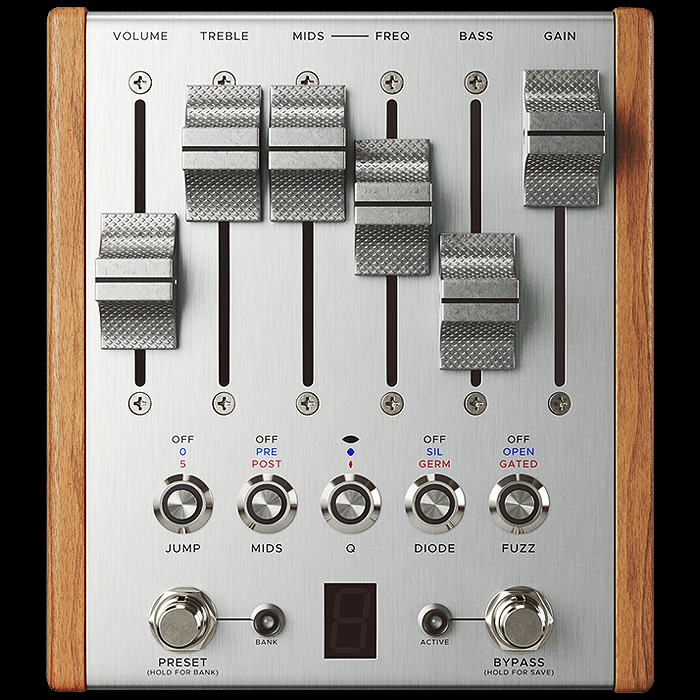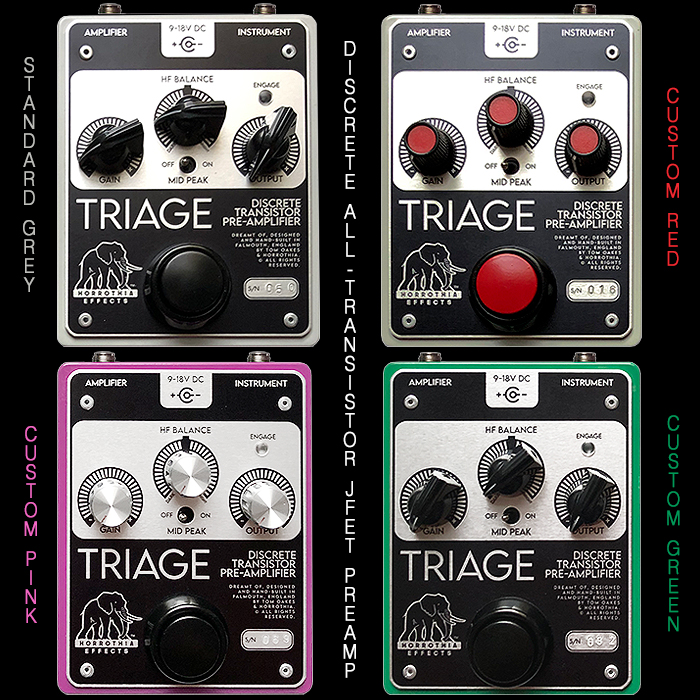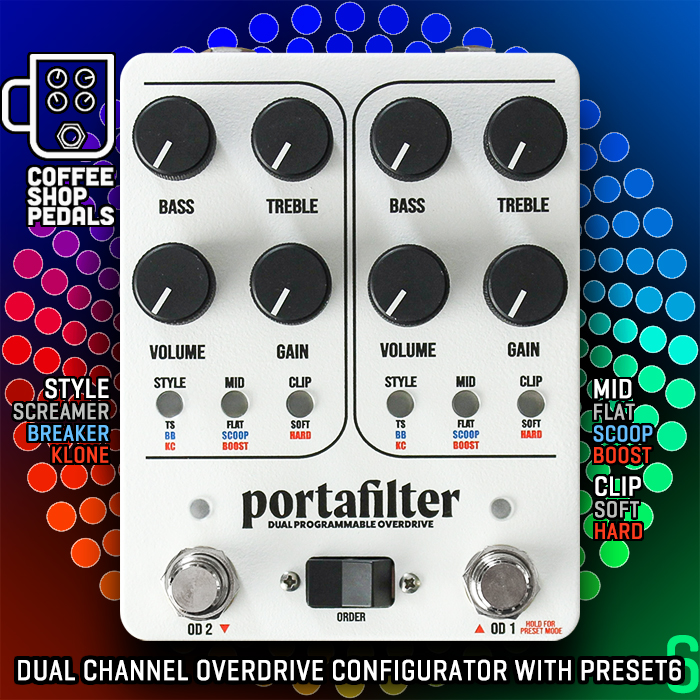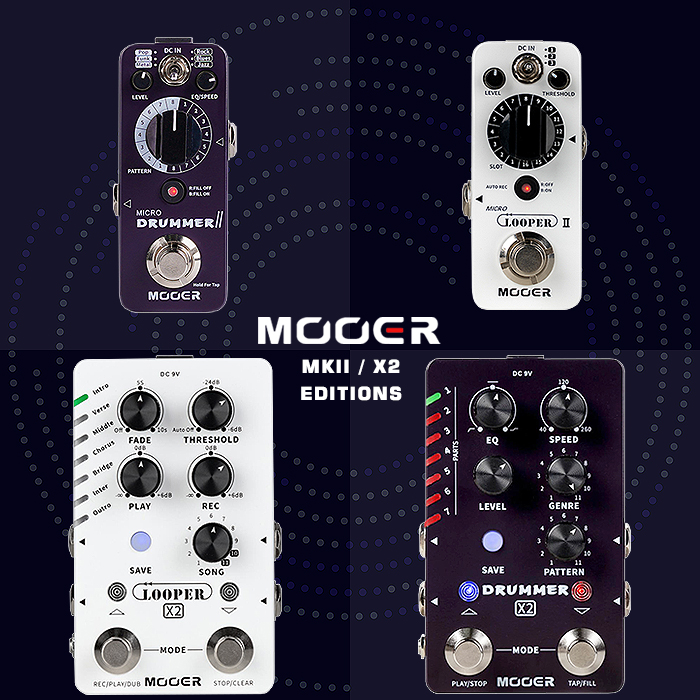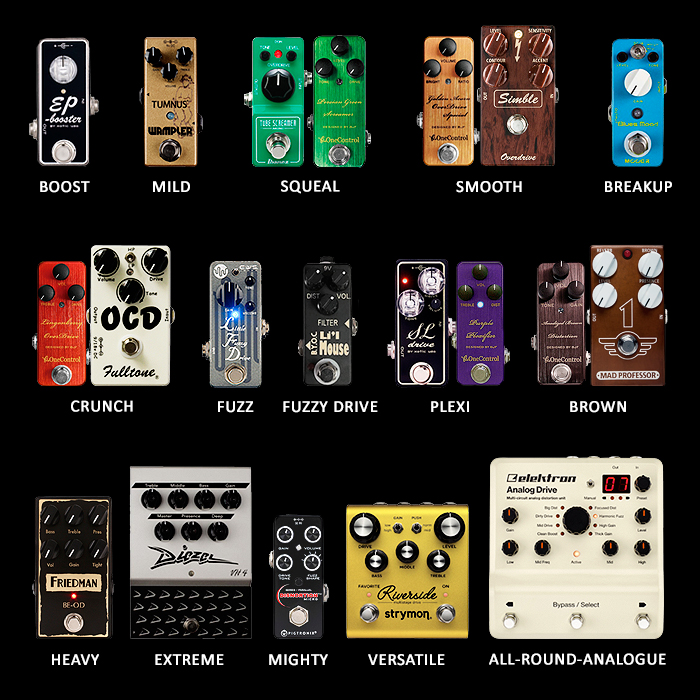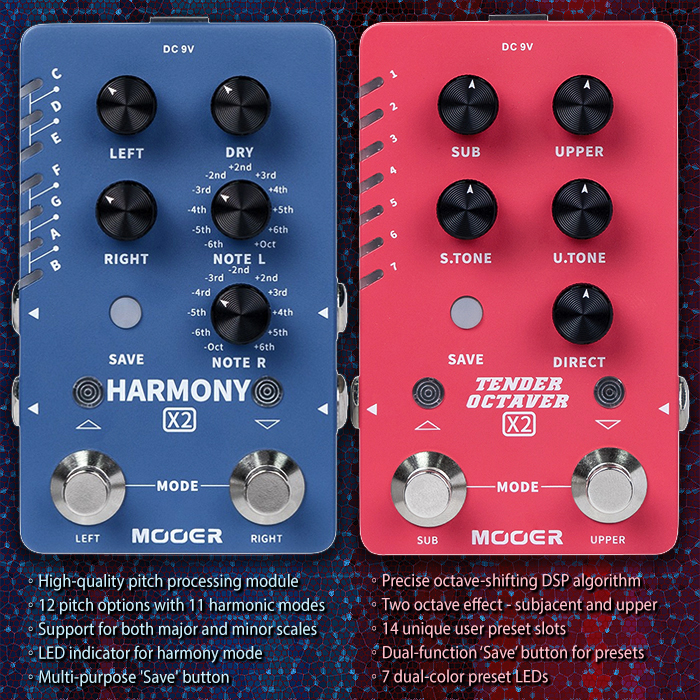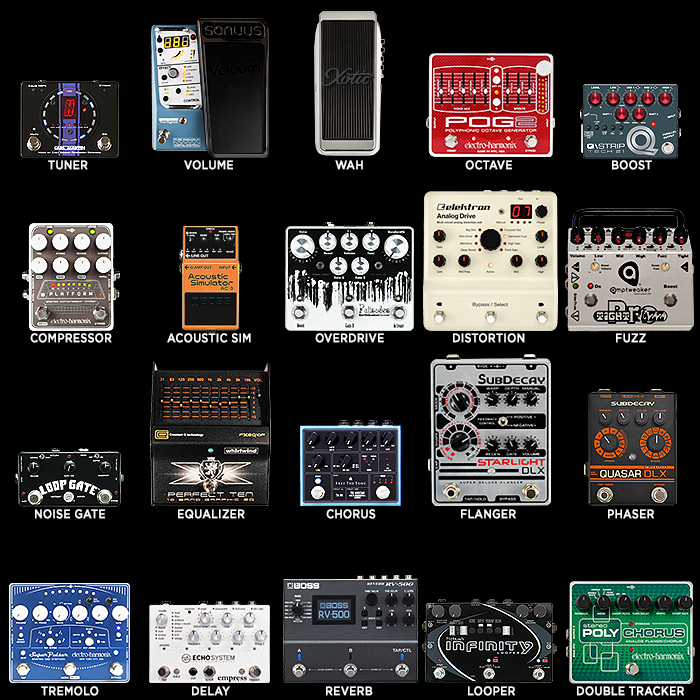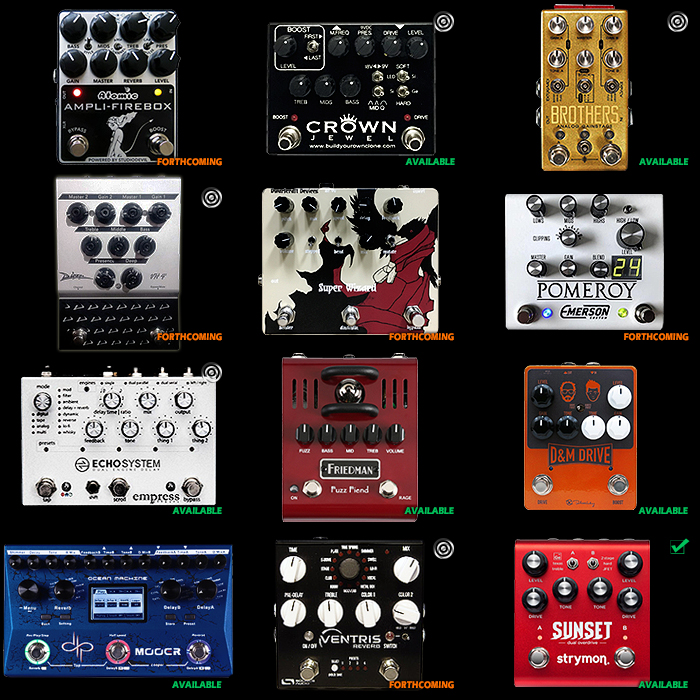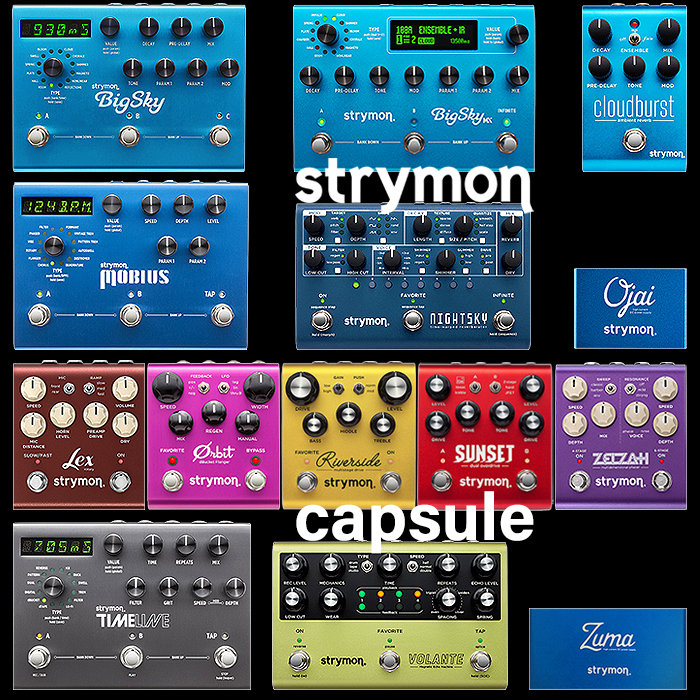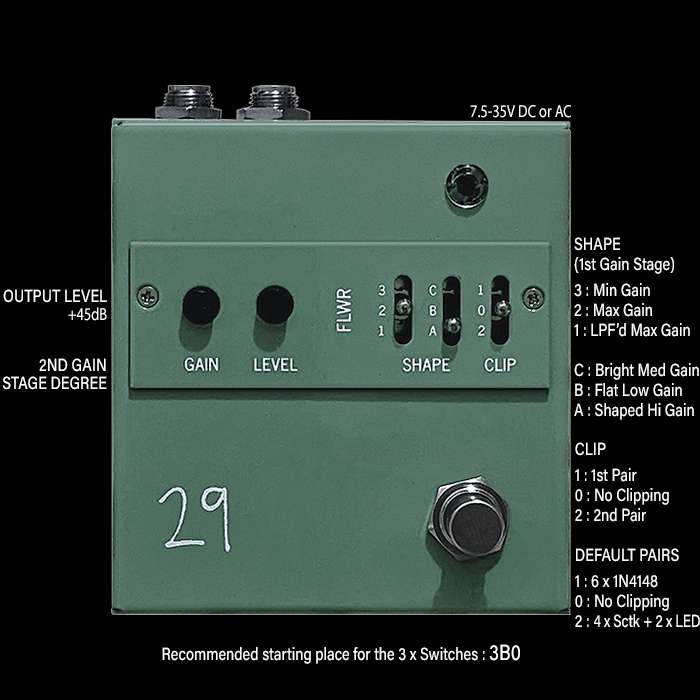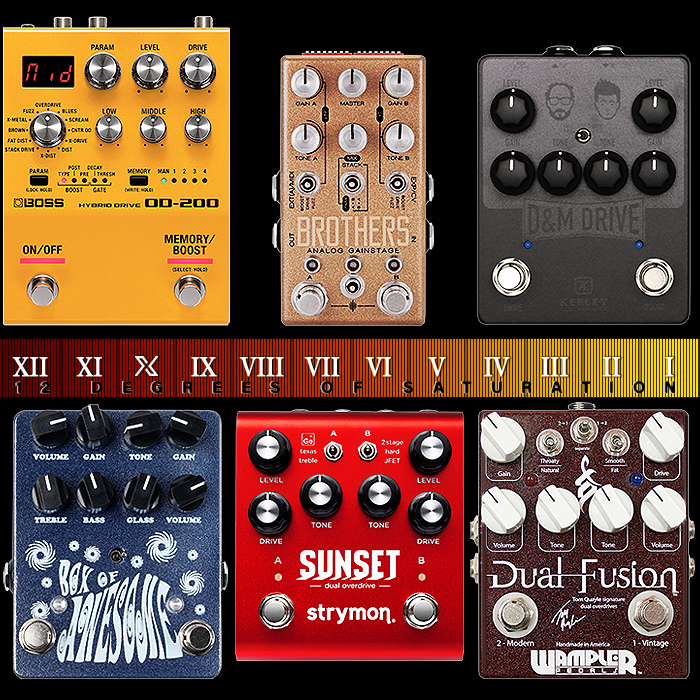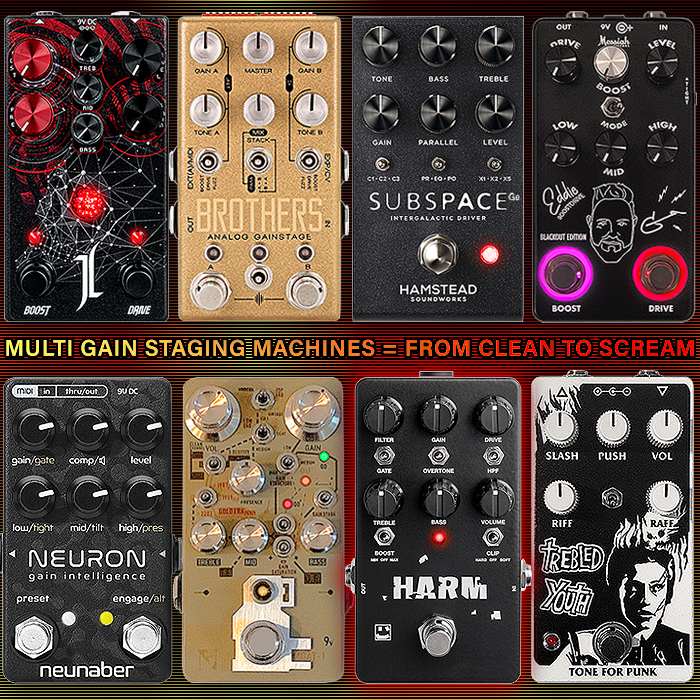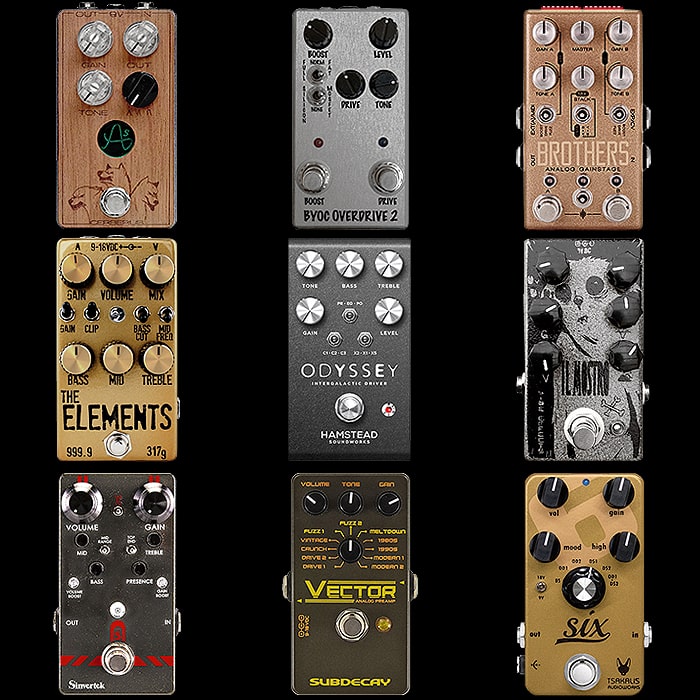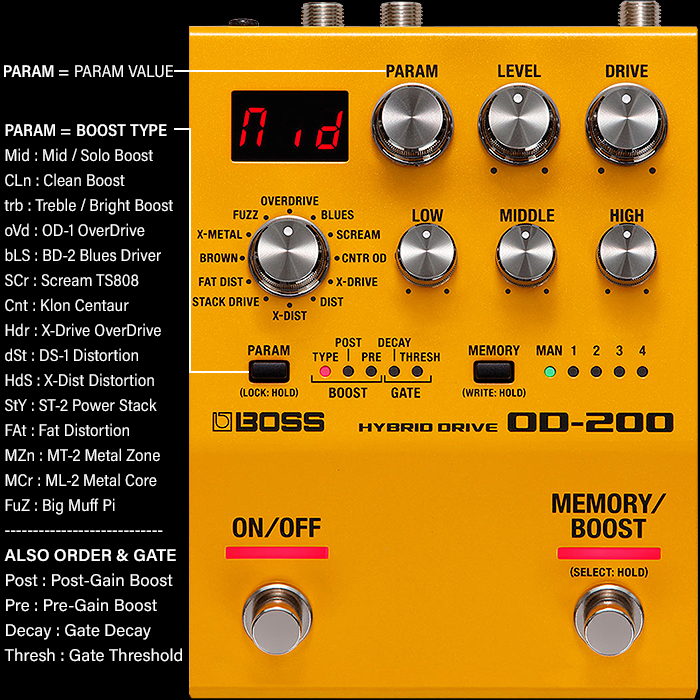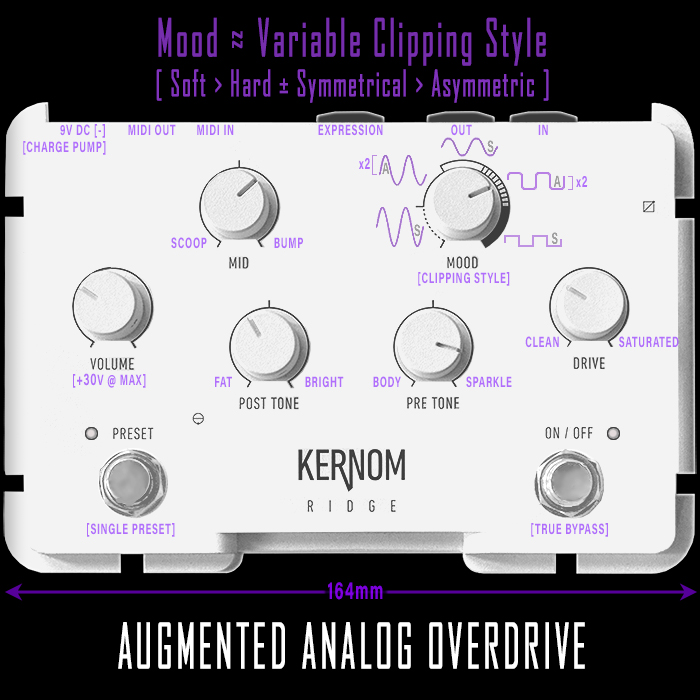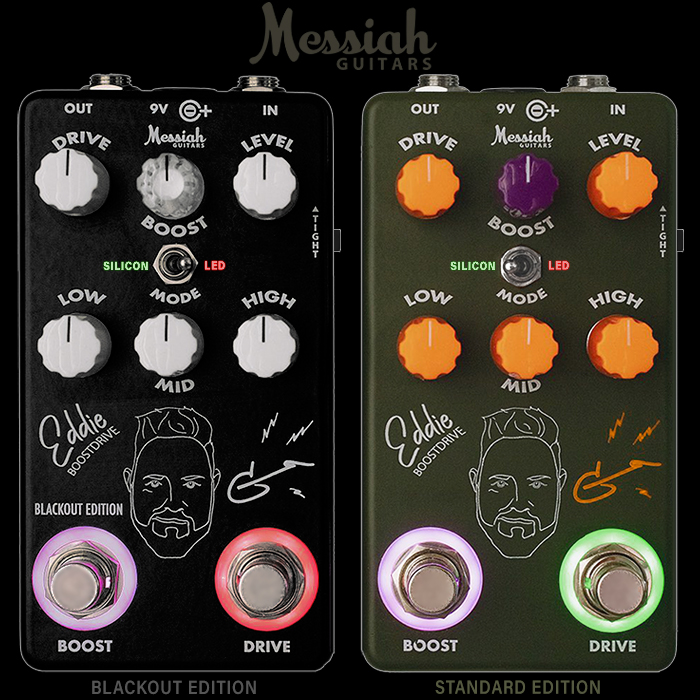Some Thoughts on Digital and Hybrid Multi-Drive Pedals

Readers will know that I’m quite the fan of Digital / Hybrid pedals - where the Strymon Riverside and Sunset in particular have been pretty much permanent fixtures of my pedal-chain since they first came out. I’m obviously a fan of the Boss OD-200 too and did a significant in-depth warts-and-all review of it when that materialised. More recently I have acquired both the Mooer Preamp Model X X2, and Neunaber Neuron Gain Intelligence Preamp / Multi-Drive pedals.
The Boss and Strymons are Hybrids with a JFET / MOSFET Analog First Gain Stage, while I believe the Mooer and Neunaber are entirely DSP - Digital Signal Processor based. Digital technologies are continually vastly improving - and you can dial in some extraordinary tones with those circuits, while there are often a few subtle idiosyncrasies in texture, density and tone-stack which can impact your tones in unwanted ways if you don’t dial things in diligently.
I probably generally prefer the Hybrid approach - as I feel that overall sounds more ’Natural’ in terms of how the signal breaks up and distorts by default over the full range of said pedal. With something like the Neunaber I find I need to cleverly employ all the secondary controls - say Gate, Compression, Tightness and Presence to get the best and most natural sounding tones.
I feel that in the main the Strymon pair tend to sound the most ’Natural’ right across the range, while I get some interesting quirks with the OD-200’s EQ - where those frequency adjustments seem to be relatively ’hard’ hitting while on analog pedals the EQ tends to impact a lot softer. With drives we talk about Smooth / Gritty, Warm / Cold, Soft / Hard, Bright / Dark, Dense / Open, Elastic / Plastic and the like - when we describe core texture and tonality. While I feel we may be missing a Q Bandwidth control at the very least on some of these (probably Parametric Mids too!) - which impacts on how hard those frequency adustments hit. And also Digital tends to default to cold, and hard and even brittle in some cases, where analog is mostly warm, soft and gooey!
So there are some idiosyncrasies in overall textural range and how the EQ’s apply. While all of these can sound remarkably natural. On the Neuron it’s all about different shades - and that is really a gain-stage-builder where you have to exactingly dial in all the parameters, but probably need a couple more parameters to totally harness every aspect of drive-tone. The Riverside is more of an amp-like variable gain-stage which has its own core texture, but is hugely variable - that does not need quite so many parameters as the Neuron to perfect its output.
And the Mooer Preamp Model X is quite a revelation too with a number of those voicings sounding incredibly ’Natural’ by default. Of course if you crank the dials in certain ways you can sort of throw those voicings somewhat off the rails and get some other ’interesting’ artefacts materialising - but generally and for most of their range they are very impressively smooth and natural sounding.
Each of these very much has its own character and specific usage scenarios - and while the OD-200 is the most expansive and has the most flavours - that is not without its faults, and it’s actually the Strymon Sunset that gets the most use in my rig - ironically on its two Boost Settings!
I use all of these quite differently and some more towards low-to-medium gain, while others more on all-out distortion. Funnily enough I use the Strymon Riverside at its two extremes - with a fairly low-gain overdrive / boost as default, and then a searing 80’s style Liquid Distortion as the second - ’Favorite’ setting.
I feel that each of these is really impressive in its own right and each has its own optimal usage scenarios - where I do deploy these quite a lot, even though my preference is typically for analog boosts, overdrives and distortions!
Here follow the individual observations on each :
Boss OD-200 Hybrid Drive - $275
Controls - Param, Level, Drive, Mode : Overdrive / Blues / Scream / Cntr OD / X-Drive / Dist / X-Dist / Stack Drive / Fat Dist / Brown / X-Metal / Fuzz, Low, Middle, High, Param Select / Lock / Boost Type / Gate, Memory : Manual / 1 / 2 / 3 / 4, On/Off Footswitch, Memory / Boost Footswitch.
I of course recommend you start with my in-depth review of the OD-200 which covers off all the key points, and for which this is a summary really. Much like the two Strymon pedals here this features an Analog First / Input Gain Stage - and while not properly referenced I would assume it would be a similar JFET type circuit like the Strymons, thereafter these pedals are quite different really.
Although the OD-200, Model X and Sunset are similar in that they have set pre-calibrated voicings, while with the Neuron and Riverside you need to dial in your own specific flavours. Boss definitely leads the line in the number of different algorithms at your disposal - with no less than 12 core Drive and Distortion voices and 15 different Boosts that you can mix and match in pretty much any order. The key miss here really is that the Boost side is not independent - had that been the case this would be an even more killer pedal. I touch on a few minor niggles with the pedal - including a glitch with the Preset selections, and a very specific issue I have with the EQ / Tone Stack in terms of how hard those frequencies apply - where analog pedals tend to have much softer EQ's.
As mentioned in the intro - Digital pedals can tend to lean towards the cold / hard / dense side of things, while Analog pedals are naturally warmer, softer, gooier, and more open-pored and elastic! That said you only get evidence of this pedal's 'Digital' roots when you really max out the Drive and EQ's - and then you get only the slightest hint of brittleness that used to impact older digital pedals. Strymon deploys clever High and Low Pass filters to prevent Flubby Bass and Ear-piercing highs - what I often refer to as the 'Strymon Sheen', while Boss tends to be slightly more open-ended with its controls. So while it's nigh impossible to get brittle artefacts on the Strymons, you can eke them out of the Boss at its more extreme levels.
Those niggles aside this really is the most capable pedal here - with lots of these voicing really authentic sounding - including in particular Overdrive, Blues Driver, Tube Screamer, Klon and Distortion Voicings - also the Fat Distortion, Brown, X-Metal and superb Big Muff style 'Fuzz' voicing.
Some of the tapers on the dials are really quite odd - particularly at the extremes - and can take particularly long for onset and then suffer very quick transition further along the curve - and particularly at the top end. These could do with being slightly more even-handed - while it seems that each Mode interacts slightly differently.
This pedal does have a certain learning curve for getting the best / most out of it, and the best tones are often created by combining the various Drive and Boost flavours in parallel and series. I feel this pedal could do with a better screen - so you can see the different modes applied for each Preset (Drive and Boost selected) - which is currently not clear - the screen from the SY-200 / IR-200 would be perfect here - and please make the Boost Channel independent for proper all-round versatility!
Overall though probably the pedal here with the most potential - where each of these has its own strengths and optimal applications. Also it took me a long while to get used to most of the 'X' type Drive variants - with the exception of the X-Metal - as they have quite different dynamics to analog pedals!
Here are the various voicing that are onboard the OD-200 :
12 Drive/Distortion Modes:
- 1 : oVd - Asymmetrical Overdrive
- 2 : bLS - Blues Driver
- 3 : SCr - TS808
- 4 : Cnt - Transparent / Klon Centaur style
- 5 : Hdr - MDP-shaped X-Drive (MDP = Multi-Dimensional Processing)
- 6 : dSt - Traditional Distortion
- 7 : HdS - MDP-shaped X-Distortion
- 8 : StY - Stack Drive (Power Stack)
- 9 : FAt - Thick, Rich, Fat Distortion
- 10 : Br∀ - Brown Sound Distortion
- 11 : HMt - MDP-Shaped X-Metal Distortion
- 12 : FuZ - Big Muff Pi Fuzz
15 Boost Modes (NOT independent!)
- 1 : Mid - Mid-Range / Solo Boost
- 2 : CLn - Clean Boost
- 3 : trb - Treble / Bright Boost
- 4 : oVd - OD-1 OverDrive
- 5 : bLS - BD-2 Blues Driver
- 6 : SCr - TS808 Screamer Overdrive
- 7 : Cnt - CNTR OD / Klon Centaur OD
- 8 : Hdr - MDP-shaped X-Drive
- 9 : dSt - DS-1 Distortion
- 10 : HdS - MDP-Shaped X-Distortion
- 11 : StY - Stack Drive / ST-2 Power Stack
- 12 : FAt - Thick, Rich, Fat Distortion
- 13 : MZn - MT-2 Metal Zone
- 14 : MCr - ML-2 Metal Core
- 15 : FuZ - Big Muff Pi
Mooer Preamp Model X X2 - $169
Controls - Gain, Level, Select / Hold to Save, Treble, Mid, Bass, Channel A / Up, Channel B / Down.
I'm assuming this pedal is all DSP, as I can see no mention of any sort of Analog First / Input Gain Stage like the Boss and Strymons have. That said it's not really noticeable bar on the Mr Smith / PRS Archon Mode which has a very distinct and very slightly artificial breakup quality - but which is actually one of my favourite flavours here!
Besides the Nr Smith most of these are pretty Natural sounding overall - I've not done the legwork to ascertain the accuracy and authenticity of each voicing compared to the actual real amp inspiration. While all these voicing are distinctly different and individual as you scan through them - not just with slightly different EQ emphasis - but different breakup character and texture. And a little like the Boss - you're only aware of the digital element here when you really crank some of those dials - then you get those very subtle hard and brittle artefacts that identify this as a Digital Drive unit - but you do need sharp ears to pick out those idiosyncrasies as these are getting so good nowadays. And I was generally surprised how natural some of these voicings sounded - while they don't quite match the under-the-finger feel / bloom and dynamics of some of those all-analog amps and drives.
I still think this is a hugely impressive unit - not as tweakable as the OD-200 which benefits from having those combination Boost elements which you can apply in Series or Parallel - so if you just want to beef things up fairly subtly you can simply combine a main Drive voicing with a complementary parallel Boost whose frequency profile further fills in the gaps of the main Drive!
On the Model X it's really just a case of selecting Channel 1 or 2 / A or B per each of the 14 Amp Types - and then applying the appropriate EQ and Gain - you can't really mix and match and tweak like you can on the Boss - the OD-200 also has a pretty useful screen - which is though not quite as practical or useful as it needs to be - and it desperately needs one of those newer LCD screens from the later 200 series models.
It's still fairly early days for me with the Model X which is the most recent addition of these 5. I'm still very much experimenting - and beside the quirky Archon flavour I'm still working out my top 3 to 5 voicings. So far I really like #7 (Archon) and #14 (5150). I also thought I would enjoy the higher gain voicings more, but so far I'm spending most of my time on the Channel 1 / A varieties - besides the 5150 so far.
You can do some novel things with the foot controls in terms of selecting A / B or paging through the voicings / presets. I really like the way on this pedal that you can set / save your own presets per voicing - and if you use the connected App, you can do even more clever things - while I'm the kind of player that likes to be able to do everything I need to on the actual unit.
You basically get 14 dual-channel Amps here - each with a lower gain and higher gain channel variant - so in effect 28 different flavours :
14 2-Channel Amps :
- 1 : 65 US TW [Fender 65 Twin Reverb]
- 2 : US SONIC [Fender Super Sonic]
- 3 : UK 30 [Vox AC30]
- 4 : JAZZ 120 [Roland JC-120 Jazz Chorus]
- 5 : REGAL TONE [Tone King Falcon]
- 6 : CAROL [Two Rock Coral]
- 7 : MR SMITH [PRS Archon]
- 8 : TAXIDEA TAXUS [Suhr Badger]
- 9 : J 800 [Marshall JCM800]
- 10 : PLX 100 [Marshall PLEXI 100 - Super Lead]
- 11 : US GOLD 100 [Friedman BE-100]
- 12 : EAGLE FB [Engl Firebal]
- 13 : CALI DUAL [MESA/Boogie Dual Rectifier]
- 14 : EV 5050 [EVH 5150]
Neunaber Neuron Gain Intelligence Preamp / Multi-Drive - $299 / $249 on sale
Controls - Gain / Gate, Comp / Speaker Sim, Level, Low / Tight, Mid / Tilt EQ, High / Presence, Preset : 1-6, Engage / Alt func. Footswitch.
The Neunaber is the first one that is quite different here - where it's more of Gain Stage Builder - where you have to tune in all the characteristics of the voicing. I believe this is another all-digital / DSP pedal as there is no mention of any Analog Gain Stage elements.
What you do here is start off by setting a Gain Level, then tweaking the 3-Band EQ, and finally applying what I refer to as the secondary Parameters - Gate, Compression, Tightness and Presence - all those help to make the voicing sound more natural and analog - and the Compression control is particularly critical to smoothing out the edges of the output.
I of course watched my name-sake Stefan Fast's demo and I agree with most of what he says - while I had the most fun in creating low to mid-gain presets - which you can handily save to 6 onboard slots that you can rapidly flip between courtesy of the Left Footswitch.
This is probably a little more challenging than the others as it has something of a more open-plan approach - and you have to tweak several settings simultaneously to hit the perfect sweet-spots, while a little patience and due diligence really pays off.
I still feel you need a few more parameters for the perfect gain stage builder - clipping options, parallel and series boosts and of course a Q-bandwidth control - probably some Parametric EQ's too. My closest template to perfect to date is the superb BYOC Crown Jewel - which has the perfect compliment of parameters to give you pretty much near enough every flavour of analog you need. Alas that is sorely in need of a digital control layers to be bale to have presets - so you can practically save all those wonderful tones.
That said, the Neuron gets you plenty close enough in most regards - even though it doesn't have the elasticity and flexibility of the Crown Jewel. I was able achieve some excellent voicings - while it's evident that in some instances you're missing a couple of controls to get you over the line of where you want to be. I think Parametric Mids would have been ideal here to get you better into Marshall and Vox territory for instance.
It's a really handy and practical pedal really, but not quite perfect. I do like it enormously though - as long as you're aware of how it works and what its limitations are you can still deploy it highly satisfactorily!
Strymon Riverside Multistage Drive - $299
Controls - Drive, Gain : Low / High, Push : Norm / Mid, Level, Bass, Middle, Treble, Favorite Footswitch, On Footswitch.
You may recall that when I first reviewed this pedal I was a touch disappointed as I hadn't properly gauged the use and usefulness of this pedal. I initially thought I would be able to recreate the exact voicings of several of my favourite overdrive pedals and would therefore be able to substitute the Riverside for a bunch of them.
As it turns out, the Riverside is nothing like the BYOC Crown Jewel and despite having 5 smart parameters - 3-Band EQ, and those clever Gain Structure and Mids Push options - you just don't have enough Parameters onboard to exactly replicate the timbre and tonality of all those classics. You would need to be able to select between hard and soft clipping, texture and flavour of breakup, alongside at least 3-Band EQ with Parametric Mids, and Q-control - also with different options for multiple gain-stages / boost elements. This is why the Crown Jewel is such a clever pedal - while that really needs some presets!
The Riverside is really a very Natural-sounding Amp-like Preamp with hugely variable Gain Stage. This means you can use it for everything from Clean Boost, to Low Gain Overdrive through to full-on High Gain Liquid Distortion - like I do - while it has its own flavour and timbre which you really can't turn to exactly replicate certain specific classic overdrives.
You have only Manual and Favourite settings onboard - where my main Manual Setting is a Low Gain Boost / Overdrive, and the Favorite is High Gain Liquid Distortion. I further have a Strymon Mini Switch attached to apply a further Boost level.
I in the main use this pedal to subtly boost and add to other overdrives and fuzzes, also as a fairly smooth low gain overdrive on its own - and of course occasionally as a Liquid Distortion.
This is an incredibly versatile pedal in that it can deliver any degrees of gain with precision - while it can't really replicate the classics - it's very much its own thing really with its own soul!
Strymon applies its High and Low Pass Filter sheen here with aplomb - so that all setting here sounds pretty natural and effortless - that Strymon Sheen stops things getting too flubby or ice-picky!
This has ended up being an essential workhorse for me - but largely deployed in a supporting role as such. As mentioned it's been in the chain pretty much since it first came out. Early on I was thinking of ditching it - because I could not replicate the Dumble sound etc. - while it's really proved to be an essential pedal for me in the long-term - and I couldn't dream of being without it!
Strymon Sunset Dual Overdrive - $299
Controls - Level A, Drive A, Tone A, A Voicings : Ge (Klon) / Texas (SRV TS808) / Treble (JFET Treble Booster), B Voicings : 2Stage (Direct Drive / Dumble) / Hard (DS-1 / Rat / Dist+), JFET (Clean Boost / Soft OD), Level B, Drive B, Tone B, A Footswitch, B Footswitch.
This very interestingly appeared at around the same time as the CBA Brothers (now discontinued) where both are very similar in overall concept and design - 2 x 3-way Channels with Parallel and Series playback options on stacking - where each channel has just 3 traditional controls essentially.
I actually initially bought this over the Brothers - while that has really become an essential Fuzz pedal for me, while the Sunset is more a Multi-Drive pedal for me.
Strymon have very cleverly engineered this pedal with complementary voicings on each channel - while covering off some really classic Drive and Distortion flavours.
This pedal naturally Replicates Klon, Tube Screamer, Treble Booster, Direct Drive, Sweet Honey / Bee, Dumble, Rat, DS-1 and Distortion+, and finally a Clean Boost that can extend into a Low Gain Overdrive. It's both complementary to and quite different - with a lot more specificity than the Riverside - while I probably still use the Riverside just a touch more for principal drive use vs supporting boost..
In fact I use the Sunset mostly - like the Riverside - in a supporting role - where the Treble Booster has turned out to be incredibly useful as a downstream booster for various Fuzzes and Overdrives. I have quite a number of slightly under-powered but great textured / sounding drives and fuzzes - which just aren't quite loud enough to be at proper unity within my rig - which is where the Sunset comes in ever-so handy.
I again have a Strymon Mini Switch applied to this pedal - to render a further 'Favorite' voicing - where when set up properly I can have up to 4 playback options with immediate switching!
I took to the Sunset very quickly really - while I still mostly use it as a secondary Boost nowadays ironically. I have so many favourite Analog Drive Pedals that I tend to default to those for the starring role. While I really could not be without my Riverside and Sunset as they really are essential daily utility pedals for my chain!
Here are the various key flavours that can be found onboard and across the two channels. Of course these sides mix and match superbly too - while I would not necessary recommend the Clean Boost with the Treble Booster! :
A - Side / Left
- 1 : Ge - Germanium Diode Clipping / Klon style voicing
- 2 : Texas - Modded TS808 style voicing
- 3 : Treble - JFET Treble Booster with low-end shelving via Tone control
B - Side / Right
- 1 : 2Stage - Soft, then hard clipping like the Barber Direct Drive, Mad Professor Sweet Honey, and Wampler Euphoria - slightly Dumble-ish to a degree
- 2 : Hard - Classic Hard-Clipper - like a ProCo Rat, Boss DS-1, and MXR Distortion+
- 3 : JFET - Clean boost through to soft, warm low-gain overdrive
Final Thoughts

Obviously Josh Scott recently featured the DigiTech DF-7 Distortion Factory which was kind of the predecessor to these in some way, and which I was only peripherally aware of. Of course pricing has ballooned up to 3 times what these were listed as - going from circa $100 to $300 even when a lot of those are of rather battered condition. The DF-7 really benefits from Parametric Mids - which ironically none of the featured 5 here have. Parametric Mids are so handy for dialling in specific pedal / amp flavours - it's a surprise really that none of the 5 recent ones have that onboard.
If only BYOC could add Presets to its Crown Jewel and have say a 5-way switchable Boost selector (Clean Boost, Dirty Boost, Treble Boost, Mid Boost, and Fuzzy Boost!) - so you can deploy a variety of gain stages - that would be the ultimate Multi-Drive pedal for sure.
As it is - it's the Boss that has the most variations in output, while overall the Strymons are probably the most consistently 'Natural' sounding. That doesn't mean all of these don't have their moments - and I've really enjoyed deploying each one here - where each has its own strengths - and weaknesses for that matter.
All of these are really pretty impressive, while none of them are really quite perfect yet!
I would love to see someone taking on the BYOC Crown Jewel project to add a Digital Control layer and Presets. Also to build a more capable pedal of the Neuron type of Gain Stage Builder - but with more parameters and more granular controls. I can see this being a little like the flow diagram on the Boss GT-1000 / CORE VDU - where you can add 'Block' elements in series and parallel and assign multiple parameters to those - including clipping type, soft or hard clipping, Q-control and full Parametric EQ's.
Boss can of course immediately improve its OD-200 by making the 15 Boosts Independent and fixing some of the glitches and minor quibbles I reported.
Interestingly the Boss GT-1000 CORE has significantly more varieties of Gain Types onboard - including 3 core fuzzes and several voicings oddly missing from the OD-200. For a full gain-stage pedal - I would like to see Fuzz Face, Tone Bender, Big Muff and Octavia types - alongside the full selection of classic Drives and Distortions - which the OD-200 doesn't quite cover off - but the GT-1000 CORE gets very close too.
These are all pretty decent pedals - while none of them really qualify yet for a full-on Principal Actor Role in the chain. I would still put the CBA Automatone Preamp MKII, BYOC Crown Jewel, DSM & Humboldt Silver Linings, Empress Multidrive, and Electron Analog Drive above all these in the pecking order. The Digital pedals are sure forever improving, but they're not quite up with the nuanced output of their analog counterparts quite yet.
There's some real magic in many of my analog / discrete circuit pedals in how they ebb and flow and bloom with wonderfully intricate harmonics and textures - and the very best digital pedals can't quite replicate all of that yet - but it for sure will happen soon enough. And if Apple was on the case - we probably would have achieved reasonable parity already!
So there's a lot to be excited about, but if you really care about high fidelity and nuance, then Digital has yet to reach its maximum potential.
If you own or deploy any of these - I would love to hear your own thoughts and insights and compare notes.
As is - the two Stymons will probably remain in position forevermore - or at least until something even more handy comes along. While the other 3 will always likely be more bit-players - however much I do enjoy deploying them - for sure each has its ideal uses!

